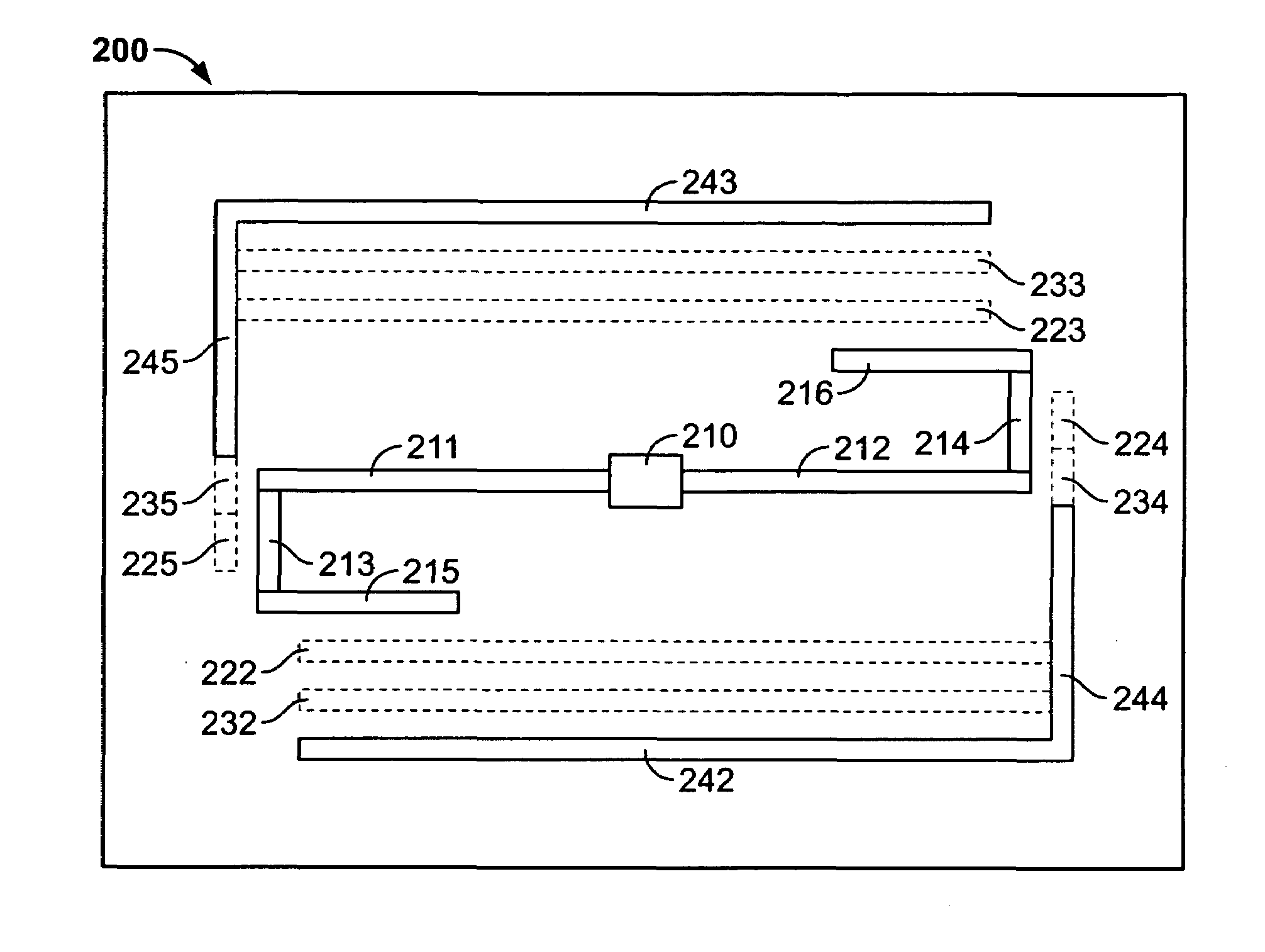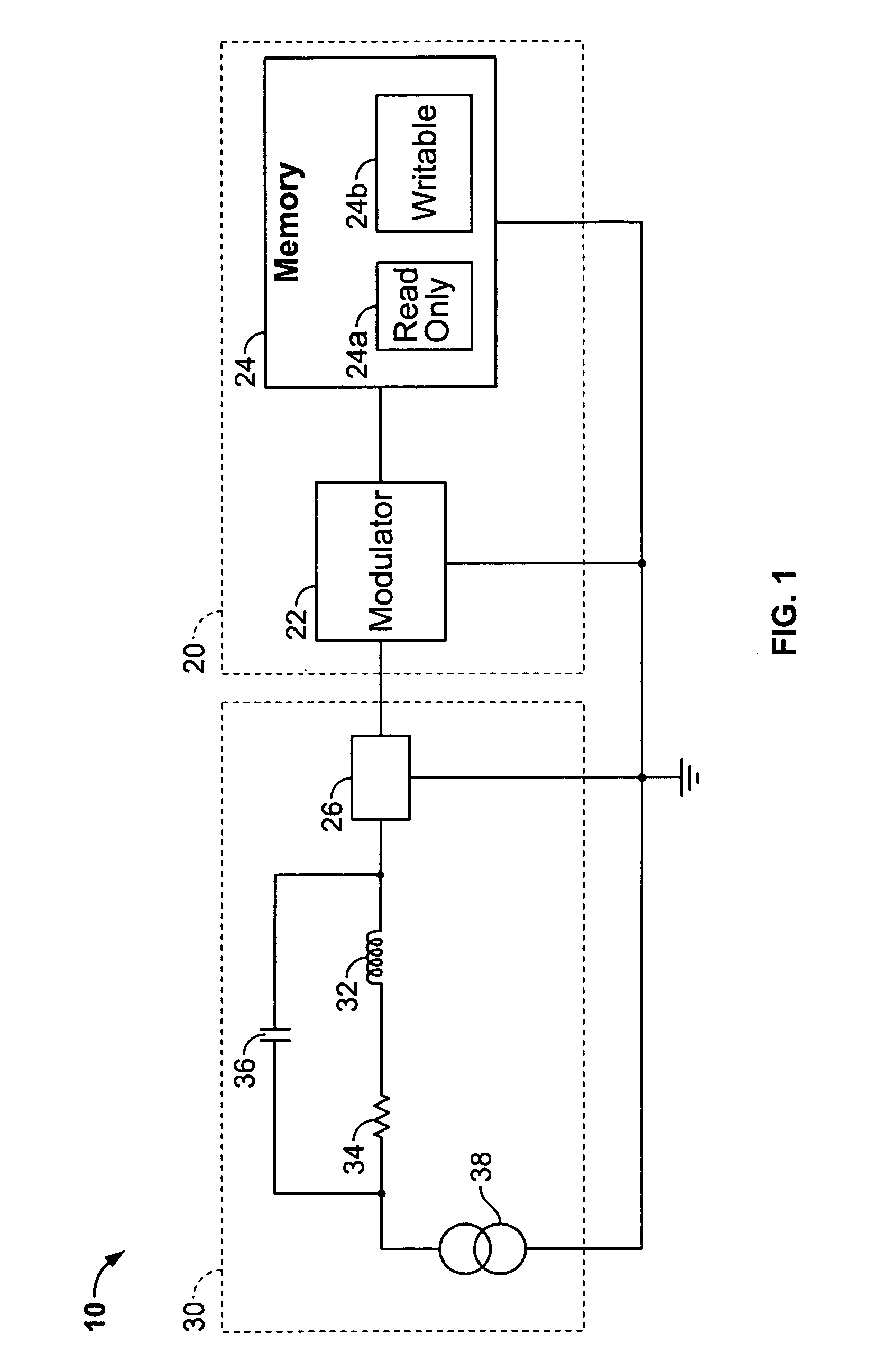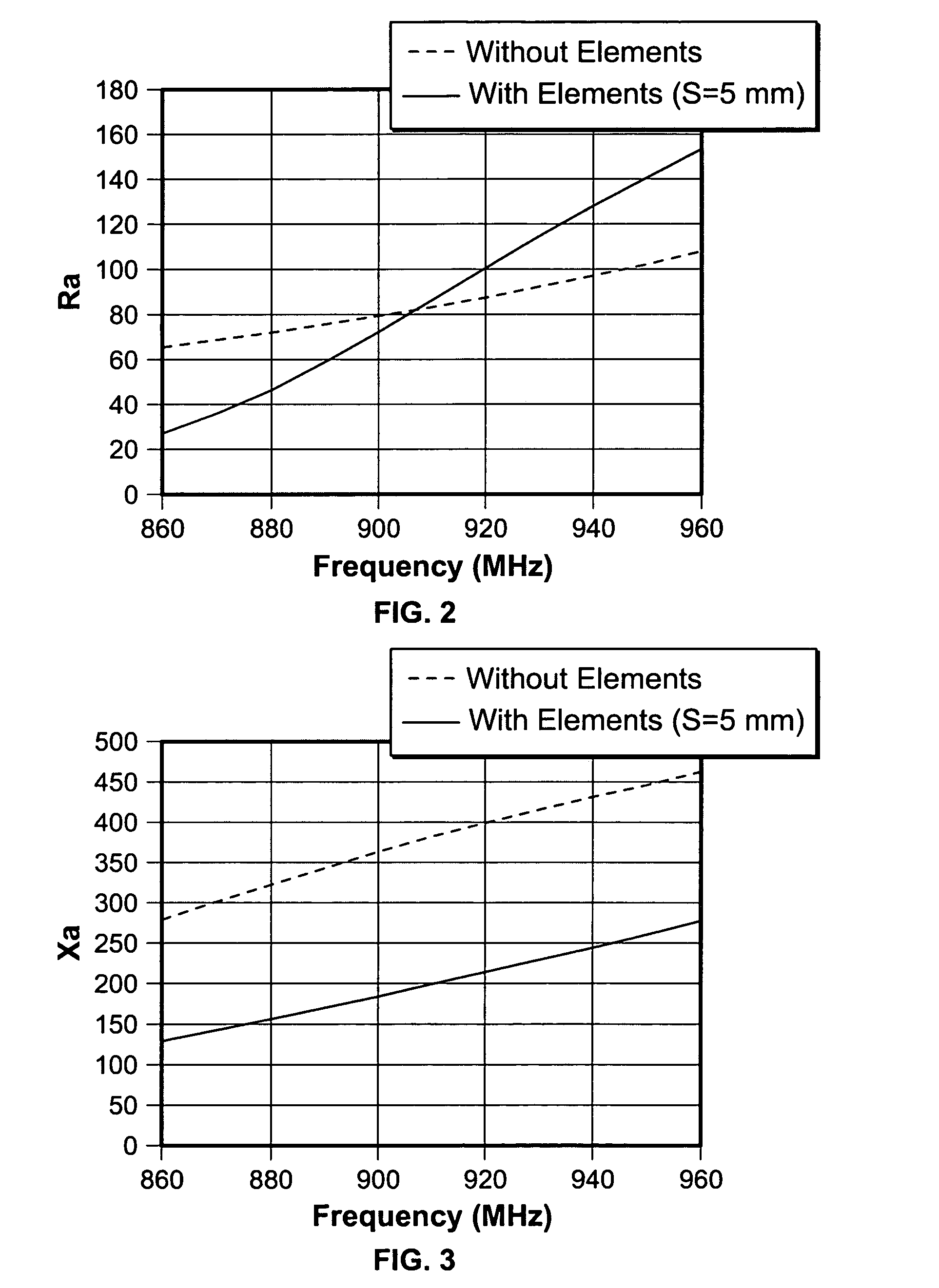Tunable RFID tag for global applications
a global application and tag technology, applied in the field of tag containing an rfid transponder, can solve the problems of not being accepted, and not being able to meet the requirements of a single global standard for uhf communication
- Summary
- Abstract
- Description
- Claims
- Application Information
AI Technical Summary
Benefits of technology
Problems solved by technology
Method used
Image
Examples
Embodiment Construction
[0022]The present invention satisfies the need for an RF tag that can be tuned for use under any national or regional standards. In the detailed description that follows, like element numerals are used to describe like elements illustrated in one or more of the figures.
[0023]Referring first to FIG. 1, an exemplary circuit schematic of an RF tag 10 is shown. The RF tag 10 includes a transponder circuit 20 and an antenna 30. The transponder circuit 20 further includes a modulator 22 and a memory 24. The modulator 22 provides the function of communicating data signals to and from the antenna 30, and the memory 24 provides the function of storing data. The memory 24 may further include a read-only portion 24A that includes data that may not be altered, and a writable portion 24B that may be selectively written-to by a remote interrogator. The transponder circuit may further comprise an RFID transponder, such as disclosed by U.S. Pat. No. 4,786,907, issued Nov. 22, 1998, for “Transponder...
PUM
 Login to View More
Login to View More Abstract
Description
Claims
Application Information
 Login to View More
Login to View More - R&D
- Intellectual Property
- Life Sciences
- Materials
- Tech Scout
- Unparalleled Data Quality
- Higher Quality Content
- 60% Fewer Hallucinations
Browse by: Latest US Patents, China's latest patents, Technical Efficacy Thesaurus, Application Domain, Technology Topic, Popular Technical Reports.
© 2025 PatSnap. All rights reserved.Legal|Privacy policy|Modern Slavery Act Transparency Statement|Sitemap|About US| Contact US: help@patsnap.com



